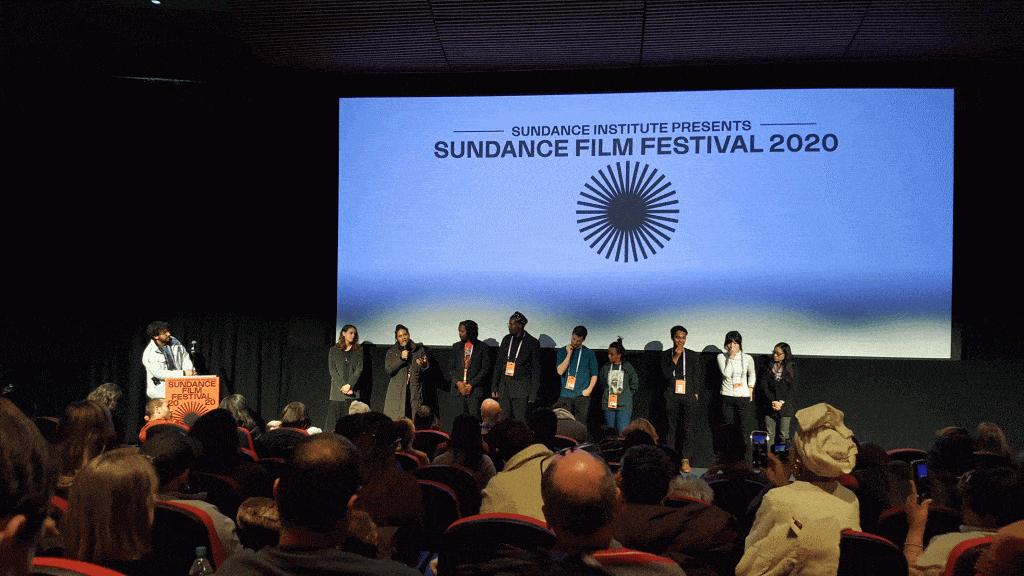The Sundance Film Festival got its start as the Utah/US Film Festival in September 1978 at Trolley Corners in Salt Lake City. Robert Redford was involved from the outset and served as the festival’s first board chairman; However, it was a BYU film school graduate by the name of Sterling van Wagenen, along with John Earle and Cirina Hampton Catania of the Utah State Film Commission who are credited with co-founding the festival.
The film festival enjoyed critical success from the start, but it was saddled with debt in its early years. Fortunately, creditors felt the best way to recoup their investment was to hold future events and sell more tickets even though financial difficulties persisted as the festival gained popularity.
As the festival contemplated a third year of financial losses, the late film director and festival board member Sydney Pollack suggested a change in timing and venue to Park City, telling organizers, “You’d be the only film festival in the world held in a ski resort during ski season, and Hollywood would beat down the door to attend.” The festival returned in January 1981 with Park City becoming its permanent home. All screenings that year were held in just two theaters – The Egyptian and the Holiday Village Cinemas.
Heavy snowfall hampered attendance in 1981 and the festival’s financial losses continued to mount, with debts totaling more than $100,000. Luckily for the festival, the weather was far more favorable to moviegoers than skiers the following year and attendance soared. Still, financial losses persisted and by 1984, discord between management and board members threatened to bring the festival to an end. Change was necessary and inevitable.
Now a convicted sex offender, Van Wagenen had left the festival after the first year to begin a pilot project for what would become the Sundance Institute (founded by Redford, his then brother-in-law). By the mid-1980s, the connections between Sundance Institute and the film festival had long existed, but their inherent symbiosis was finally becoming evident: the festival continued to struggle financially, while the institute lacked access to theaters for the films it was helping to cultivate. In the months leading up to the 1985 festival, Sundance Institute assumed control of festival operations and shifted the focus more sharply to independent films and the development of a broader, national following.
The festival was subject to several name changes before being renamed the Sundance Film Festival following the 1990 festival. The Sundance name, of course, is a nod to Robert Redford’s eponymous role in the 1969 film Butch Cassidy and the Sundance Kid. However, in a 2015 interview with Democracy Now!, Redford stated he did not favor using the name because he felt it was too “self-serving.” However, he said he was ultimately outvoted on the matter and had to agree that it was a great name after all.

Credit: Image courtesy of Dalton Gackle.
The festival enjoyed steady growth over the years and by the late 1990s, the town of Park City was struggling to accommodate the event that Sundance had become. Additional theater venues had opened over the years (Prospector Square in 1987; the Jim Santy Auditorium in 1995; and the Yarrow Hotel in 1997) but facilities remained inadequate to accommodate patrons, public transportation struggled to keep pace, and the local telephone system crashed routinely during the festival. There was talk of moving the festival back to Salt Lake City to accommodate its growth. However, Park City was determined to keep the festival, which now generated more than $20 million in direct annual investment.
Relief came in the form of some refinements to festival programming and the introduction of a new theater (the 1,300 capacity Eccles Theater) which opened in 1998. This was followed by preparations for the 2002 Winter Olympics which helped Park City address infrastructure issues, including improved public transportation and upgrades to the local telephone system. In 2017, a new challenge presented when Park City faced its worst gridlock in history as 8,000 protesters joined the March for Women rally held during the festival on the day following President Donald Trump’s inauguration.
Today, Park City remains the permanent home of the Sundance Film Festival and serves as a major economic driver to the local economy. The last in-person festival was held in 2020 during which 244 films and other projects were shown across 10 local theaters. After a two-year shift to an all-online format, the 2023 Sundance Film Festival returns to Park City January 19-29. For more information visit https://festival.sundance.org/.
The Park City Museum will be closed for Sundance from Tuesday, January 17 through Friday, January 27. We will reopen on Saturday, January 28.